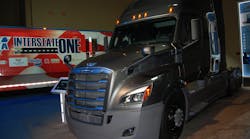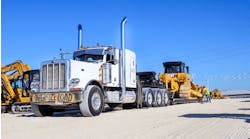LAS VEGAS. Calling the current downturn in U.S. Class 8 truck sales “a bit unexpected,” Martin Daum, president and CEO of Daimler Trucks North America, now expects those slow sales to continue through the first half of 2017. And while he believes sales will pick up in the second half, “they won’t be enough to offset the first half, so we’re seeing 2017 as off slightly from this year,” he said at a press conference during the American Trucking Assns.’ annual management conference.
Overall Class 6 to 8 retail sales in the U.S. will end the year down 16% from 2015, with almost all of the loss coming in Class 8, according to Daum. Heavy truck sales will be off 26% from 2015 levels, he said.
With expectations that interest rates will remain relatively low and the economy will continue to register growth, Daum now sees a return to stronger Class 8 sales finally coming in 2018. Those sales will be driven by fleets beginning to refresh aging equipment, he said.
ACT Research forecasts U.S. retail Class 8 sales ending the year at 210,000 trucks, down from 253,000 in 2015. ACT chief economist Kenny Veith told Fleet Owner that his most recent calculations put 2017 sales in the range of 150,000 to 154,000 units, with a fairly strong resurgence following in 2018.
“We might have forgotten a bit about [cyclical truck-sales downturns] during the strong markets the last two years,” Daum said. One of his goals for DTNA in the coming year is to successfully manage the market cycles no matter where the final numbers end up.
Turning to other topics, Daum called the recently release Greenhouse Gas (GHG) Phase 2 reduction proposal “challenging but achievable” by fine-tuning existing technology. He praised federal regulators for working with industry to develop a plan that gives truck manufacturers “flexibility, lead time and certainty… without surprises or disruptions.”
While Daum doesn’t rule out any new technologies, “we definitely won’t need waste heat recovery, battery power or natural gas” to reach the 2020 to 2027 Phase 2 requirements. The required reductions in GHG emissions “are huge steps, but I’m confident we can reach them,” he said.
By comparison, the future of autonomous driving technologies is “still too blurry” for any type of definitive government regulation. “We don’t even know yet what is possible, and we have to work our way though exploring those possibilities,” Daum said.



